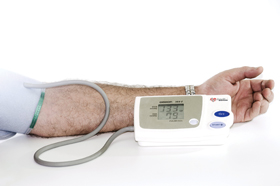Simple tools, teamwork manage depression in primary care
Embedding mental health professionals directly into a primary care setting threatens to add complexity to primary care's already hefty ‘to do” list. Clinics that have accomplished that task explain how not only was it easier than expected, but it adds tremendous benefits to the practice.
Michigan's Henry Ford Health System ran into some resistance from physicians when it piloted a new model for depression care in three of its primary care clinics. Naturally, doctors worried about adding a new layer of complexity to their already hectic practices, but an even greater fear was what to do when faced with suicidal ideation.
The new model requires that patients with one or more of six chronic conditions, diabetes, coronary artery disease, heart failure, chronic obstructive pulmonary disorder, asthma or chronic kidney failure, undergo screening for depression. But “the whole process breaks down if people are afraid of the suicide question,” said M. Justin Coffey, MD, a neuropsychiatrist at Henry Ford Behavioral Health Services, who spoke at the Institute for Healthcare Improvement (IHI)'s 22nd Annual National Forum on Quality Improvement in Health Care in Orlando, Fla. last December.

Henry Ford helped physicians overcome that fear by embedding behavioral health specialists in the practices and providing direct access to on-call psychiatrists and emergency departments so that patients identified as high risk for suicide were guided to the appropriate level of care. With a clear process in place for managing high-risk patients, the practice teams felt comfortable going forward with universal screening.
And that screening has led to identifying and treating more patients with mild to moderate depression who can be treated by their primary care physician (PCP), Dr. Coffey added. After three years of the pilot, 90% of patients who screened positive for depression were managed by their primary doctor, 67% were prescribed antidepressants and 53% achieved a full response to antidepressant treatment.
“Our goal is to help PCPs with the straightforward diagnoses and get the more complex patients to specialists,” said Terri L. Robertson, PhD, program manager at Henry Ford's Center for Clinical Care Design, which is in charge of implementing integrated depression care across Henry Ford's 27 primary care clinics.
Simple tools and teamwork
Depression screening guidelines issued in December 2009 by the U.S. Preventive Services Task Force called for screening all adults for depression, but only when the appropriate supports are in place. [See “Guidelines call for depression screening, “ ACP Internist, March 2010.]
Embedding behavioral health clinicians is crucial to succeeding with an integrated depression care model, said Drs. Robertson and Coffey. Under Henry Ford's model, each practice has a half-time behavioral health nurse practitioner who provides intensive initial training and support, and then float among participating clinics. In addition, practices have access to a clinical psychologist and a psychiatrist for “curbside consults” and urgent consultations with patients.
The model also relies heavily on teamwork and simple tools, said Dr. Coffey. For example, medical assistants are trained to administer an initial two-part questionnaire to patients at the beginning of a visit. The PHQ-2 asks patients to respond yes or no to these two questions: Do you have little interest or pleasure in doing things? Are you feeling down, depressed or hopeless?
Patients who respond “yes” to one or both questions are asked to complete an expanded questionnaire based on the Patient Health Questionnaire-9 (PHQ-9) that is embedded in the patient's electronic health record. The medical assistant brings up the form on the screen, locks access to other parts of the system, and asks the patient to enter his or her answers while waiting for the doctor. Results are calculated and analyzed before the physician arrives in the exam room.
That frees up the physician to focus on discussing results with the patient instead of entering data, said Dr. Robertson. In the past, physicians would fill out the questionnaire on paper during the visit and medical assistants would enter the information into the patient's file at the end of the day, a burdensome process that put everyone behind schedule.
“The key,” she said, “is embedding the questionnaire into the workflow” and the electronic record system.
DIAMOND model
Primary care clinics in Minnesota and Wisconsin have taken a similar path to improving depression care with the Depression Improvement Across Minnesota, Offering a New Direction (DIAMOND) model, launched in 2008 by the nonprofit Institute for Clinical Systems Improvement (ICSI), which serves Minnesota and surrounding states. Over the past two-and-a-half years, 83 clinics, mostly in Minnesota, have implemented collaborative depression care management using the PHQ-9 as a screening tool. It was launched in March 2008 with 10 clinics in Minnesota, and clinics were added gradually every six months after that.
Notably, nine health plans agreed to support the DIAMOND initiative, allowing participating clinics to bill under a common payment code for providing a bundled set of care management services. Those include using the PHQ-9 for both screening and monitoring patients' response to treatment, said Tim Hernandez, MD, of Family Health Services Minnesota, and Nancy Jaeckels, vice president of member relations and strategic initiatives at ICSI, who spoke at the IHI conference. Practices must also have care managers who use a registry to track patients' progress, make follow-up contacts, and collect and document data.
Other key elements of the program include:
- Stepped care approach. Adjust treatment based on PHQ-9 scores, use evidence-based guidelines, initiate frequent contact with patients and take a team approach to care;
- Care manager. Assign a person to follow up with patients for education, support of self-management goals, coordination of care, and relapse prevention;
- Consulting psychiatrist. This person spends two hours a week reviewing cases with a care manager and builds relationships with the primary care team; and
- Relapse prevention. Take a proactive approach to preventing relapse, including having the care manager work with the patient to identify risk factors, treatment options and warning signs of relapse.
The DIAMOND program has the potential to significantly improve response and remission rates among patients at participating clinics while reducing overall costs, the speakers said.
DIAMOND is based on results from the IMPACT (Improving Mood-Promoting Access to Collaborative Treatment) trial of 1,801 geriatric patients, which found a 50% or greater improvement in depression at 12 months for patients treated with the collaborative model vs. usual care (published in the Dec. 11, 2002 issue of JAMA). The IMPACT researchers, led by Jurgen Unutzer, MD, MPH, at the University of Washington, have published numerous follow-up studies, including one showing that the IMPACT patients had lower total healthcare costs over four years than usual care ($29,422 vs. $32,785). The study was published in the Feb. 15, 2008 American Journal of Managed Care.
The IMPACT researchers are currently collecting data for the DIAMOND project. Based on IMPACT results to date, the researchers estimated the total cost for DIAMOND care at $18,290 per year per patient compared with $30,634 for usual care, a near 50% improvement.





